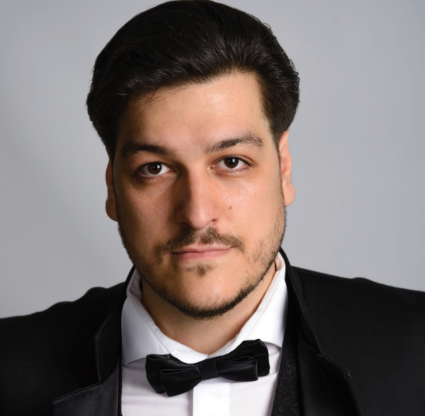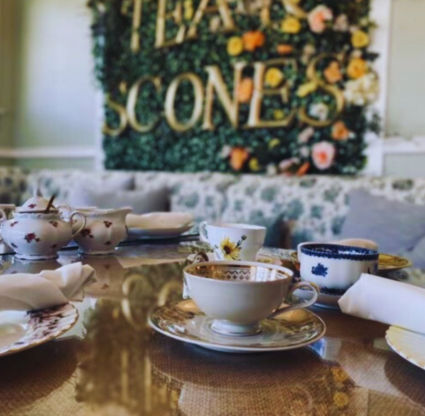In Cheri Dunnigan’s Naples home studio, a severed tree stump reveals a hodge-podge of bundled wires, anvils, pliers and forming tools. Here, the renowned metalsmith designer spends months weaving each of her intricate, lace-like sculptures and jewelry, be it a double helix collar or a glimmering sundial medallion.
The artist’s work is at once soft and brawny, twisting in on itself again and again in a dizzying whirlpool of woven wire—combining techniques of metalworking and textile creation. “I work with one basic stitch with metal, but the way I put those stitches together gives me this broad range of things I can create,” Cheri says. The Massachussets-bred artist’s Woven Collection, a series of delicate, chainmail-like jewelry and sculptures, displays a serpentine musculature that coils and stretches as if poised to strike. Cheri’s woven works often mimic the geometry of natural configurations—like the curve of a nautilus, the center of a sunflower or a tightly coiled fern. The metalsmith’s ornate Byzantine and Dandella collections, on the other hand, showcase sundial medallions embossed with gold, sterling and freshwater pearls.
Her mother’s Armenian heritage is inextricably linked with her creative identity. At 3 years old, Cheri proclaimed to her Sunday school teacher that she didn’t just want to be an artist but an Armenian artist. She takes pride in her people’s history, even the parts that cause her pain. Somewhere between 600,000 and 1.2 million Armenian Christians were murdered in what scholars refer to as the Armenian genocide, which occurred in the Ottoman Empire during World War I. Before the tragedy, Armenians had been known for their expert craftsmanship and artistry, but many generational artforms were lost as families fled to escape the conflict. Cheri was in her 30s before she learned the meaning of her mother’s maiden name: Jaffarian, or “son of a jeweler.”
“There was a legend in our family that there had been jewelers in the old country way back, but the farthest back we knew, my great grandfather had owned a shoe factory in Armenia,” Cheri says. The discovery bolstered and gave credence to her work. A lace-making conference in Italy connected the metalsmith with a network of textile artists and reinforced her interest in modern weaving techniques. Before all that, Cheri was already entrenched in jewelry making, drawn to the craft as if by divine guidance. “When you’re creating, there’s a sense of something bigger than yourself working with you—it’s a spiritual thing,” she says.
As Cheri’s interest in her culture grew, she began to see parallels between her woven jewelry and the tradition of Armenian needle lace, a generational lace-making technique marked by fine detail and elaborate patterns passed from mothers to daughters. After World War I, the craft allowed female refugees to establish businesses and support themselves abroad. “For me, it’s a symbol of the survival of the culture, because it was the only artform that really truly survived the ashes of the genocide,” Cheri says.
During high school in Massachusetts, Cheri’s teacher was an avid weaver and her husband worked as a master metalsmith. The two devised a metalworking project for Cheri’s class—a basic, linear broach made with hammered wire. Compared to her current work, the broach was a simple trinket, but it unlocked the gates to discovery. “The minute I touched [the metal], I was smitten,” she says.
Cheri’s teacher took the 15-year-old under her wing, encouraging her aptitude with metalwork and instilling basic principles of weaving, crocheting and macrame. “They would give me the keys to his studio and let me just work on whatever I wanted to,” she says. At Cleveland Institute of Art, where Cheri pursued the prestigious five-year metalsmithing program, she studied under revered jewelry designer John Paul Miller. “Everything he did was just so well done, so beautiful, so exquisite. The pursuit of beauty was important to him, and that rubbed off on me,” she says. Cheri’s work departs from John Paul’s style—which often depicts butterflies, moths, scorpions and cephalopods with a more direct, representational approach—but reflects his baroque intensity with a softer edge.
After college, the metalsmith ran a successful jewelry shop for eight years before relocating with her husband to Naples in 1994. Four years later, she was diagnosed with crippling lupus, a chronic autoimmune disease with no cure. Cheri had experienced bouts of extreme fatigue and soreness since she was 21 years old, and after having her son at 39, the episodes became more frequent and severe. Cheri grappled with shortness of breath and joint pain, particularly in her hands. “I thought if I ever had to give up metalwork, it would be like giving up breathing,” she recalls.
As Cheri’s dexterity faltered, the metalsmith found solace in painting. “I felt like the Lord spoke and said, ‘Stop focusing on what you can’t do, and start focusing on what you can do,’” she says. Her husband furnished a makeshift studio in their home. “I would crawl in there feeling horrible and come out skipping hours later,” Cheri says. “I really believe I painted my way into remission.”
Ultimately, the artist was unwilling to fully give up metalwork and would make pieces for her mother for Christmas, birthdays or Mother’s Day. The approach was far more limited, but each piece stretched her creativity. Around 2010, she crafted a necklace with intricate medallion shapes for her mother and felt her nimble fingers growing strong again as her condition went into remission. With her artistic energy reignited, she started to create limited-edition collections of one-of-a-kind adornments.

Cheri’s now-coveted Dandella collection showcases her affinity for Armenian needle lace, with Akoya pearl-adorned pendants that resemble the craft’s delicate, web-like patterns. The Byzantine collection sees golden medallions encircled with precious stones and dainty arches of silver beads, calling to historic Roman coin pendants and brooches. Her Woven line of jewels and sculptures emphasizes Cheri’s apt blending of knitting and metalsmithing techniques.
When virtuoso gallerist and designer Chad Jensen—of Naples’ METHOD & CONCEPT, which now represents the artist—discovered Cheri’s work last year, he was drawn to her craftsmanship and attention to detail. Since then, the two have collaborated to expand Cheri’s repertoire, with Chad challenging her to experiment with larger sculptural works and different metals and coatings. “A lot of what we think about is future heirlooms and modern antiquities,” he says. “Her pieces could be on someone’s shelf in hundreds of years. They could look back and still think about how amazing her craftsmanship was and her attention to detail.”
Detailed, ornate and methodical, Cheri’s work mirrors traditional patterns in a way that looks fresh and awe-inspiring today. “My husband saw photographs of the lace and said, ‘I think you had a DNA leak,’” she says with a laugh. “Growing up in the shadow of that tragedy, I always wanted to do something creatively that would honor what happened to my grandparents’ generation. Then I found myself making these pieces that resembled the lace. It was like the Lord handed me the thread and said, ‘Make it in gold.’”





